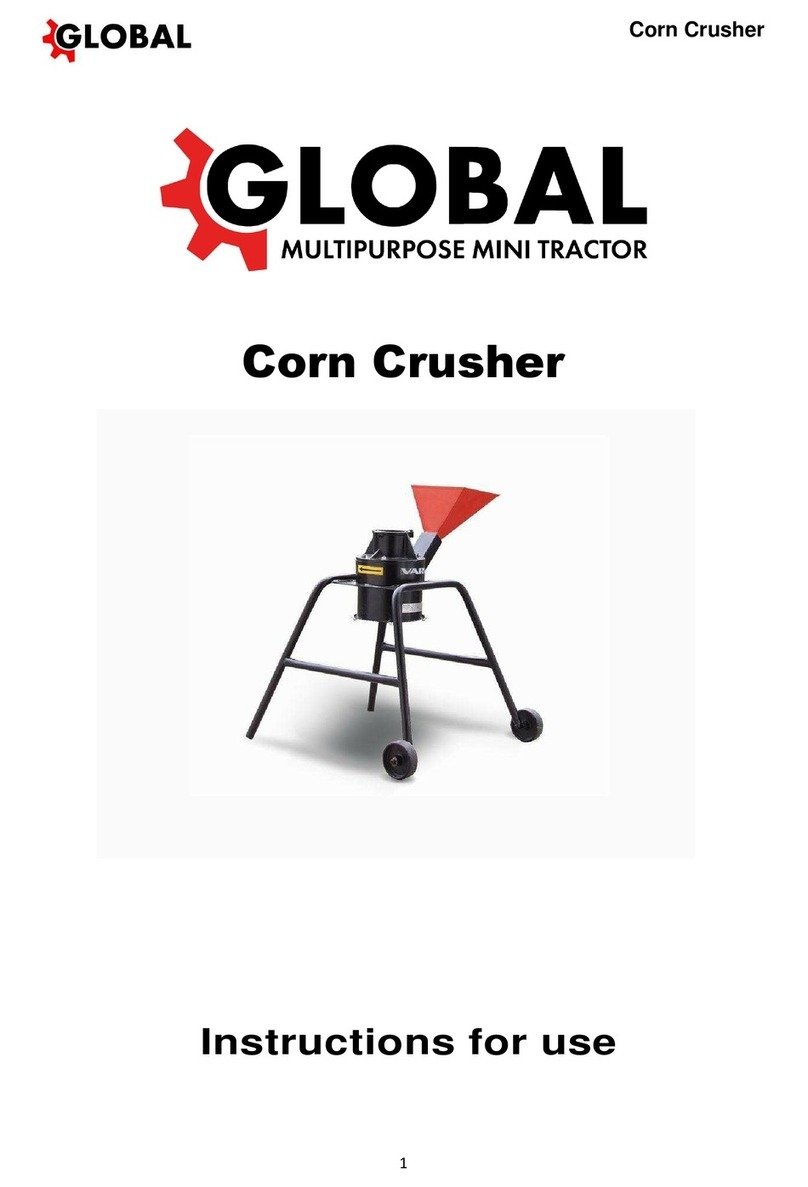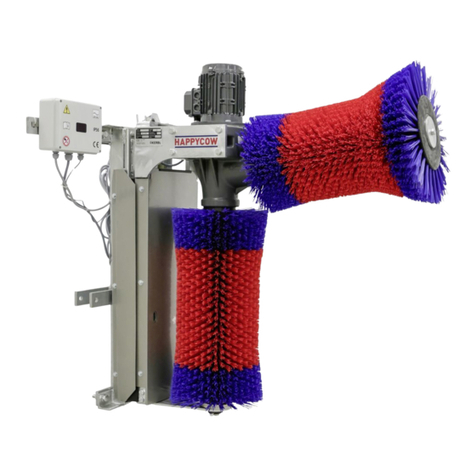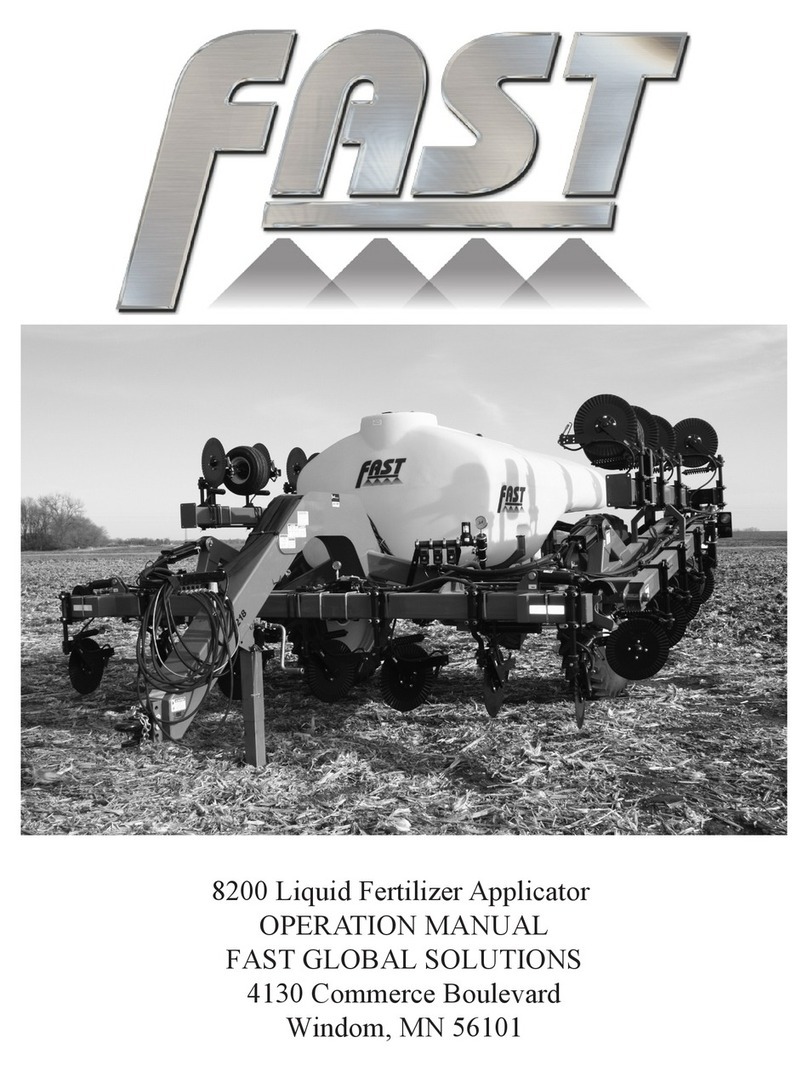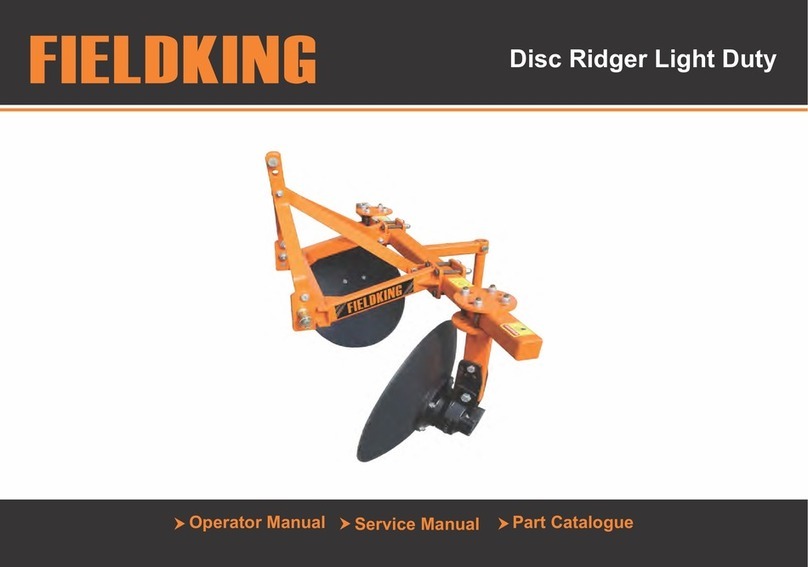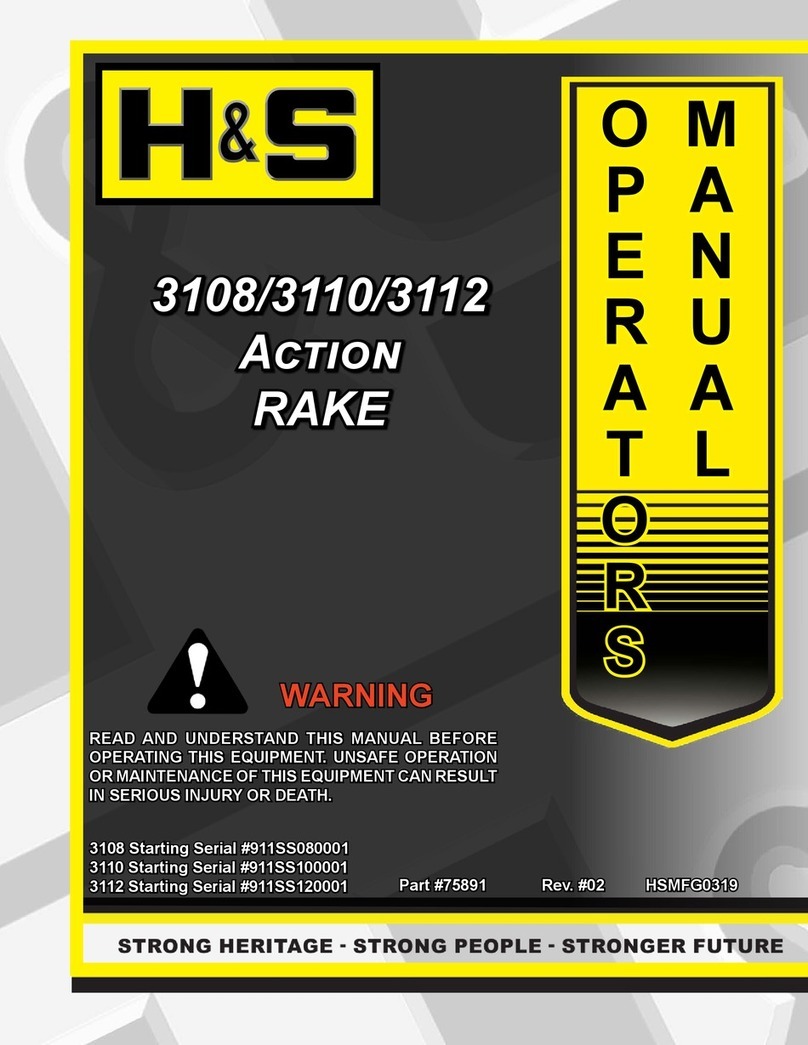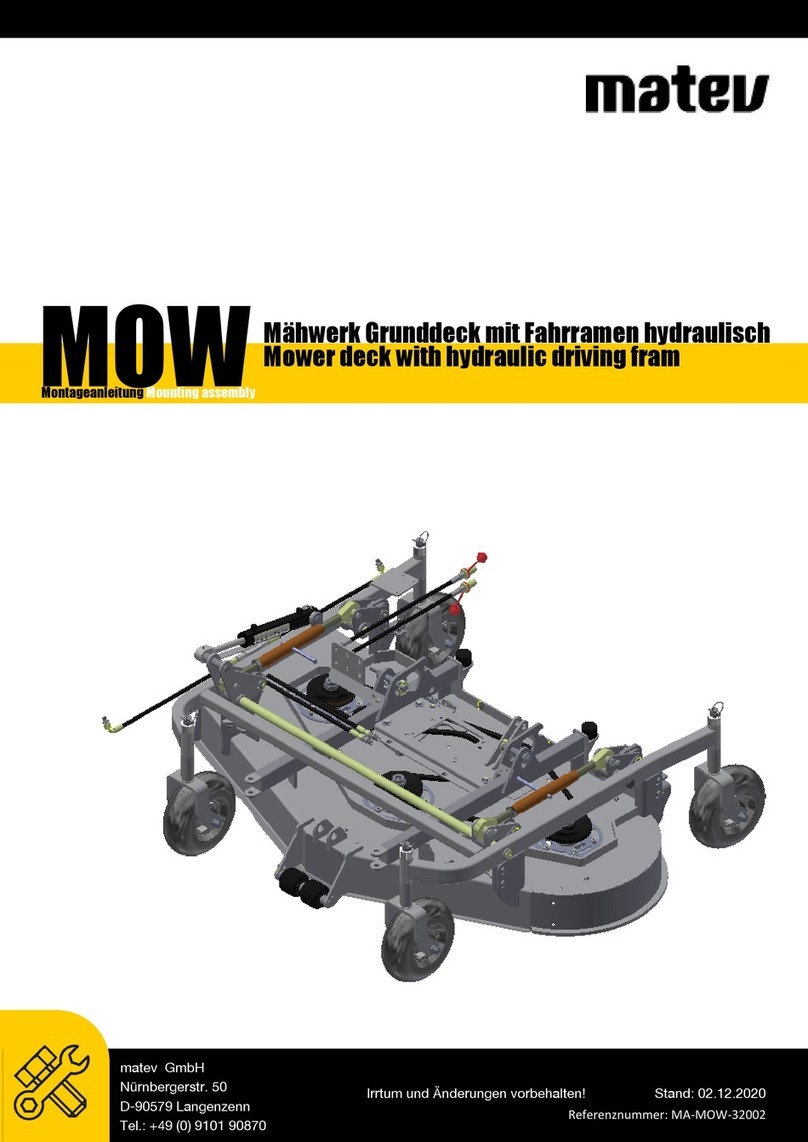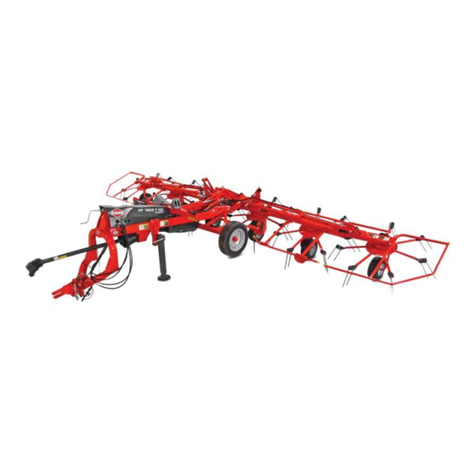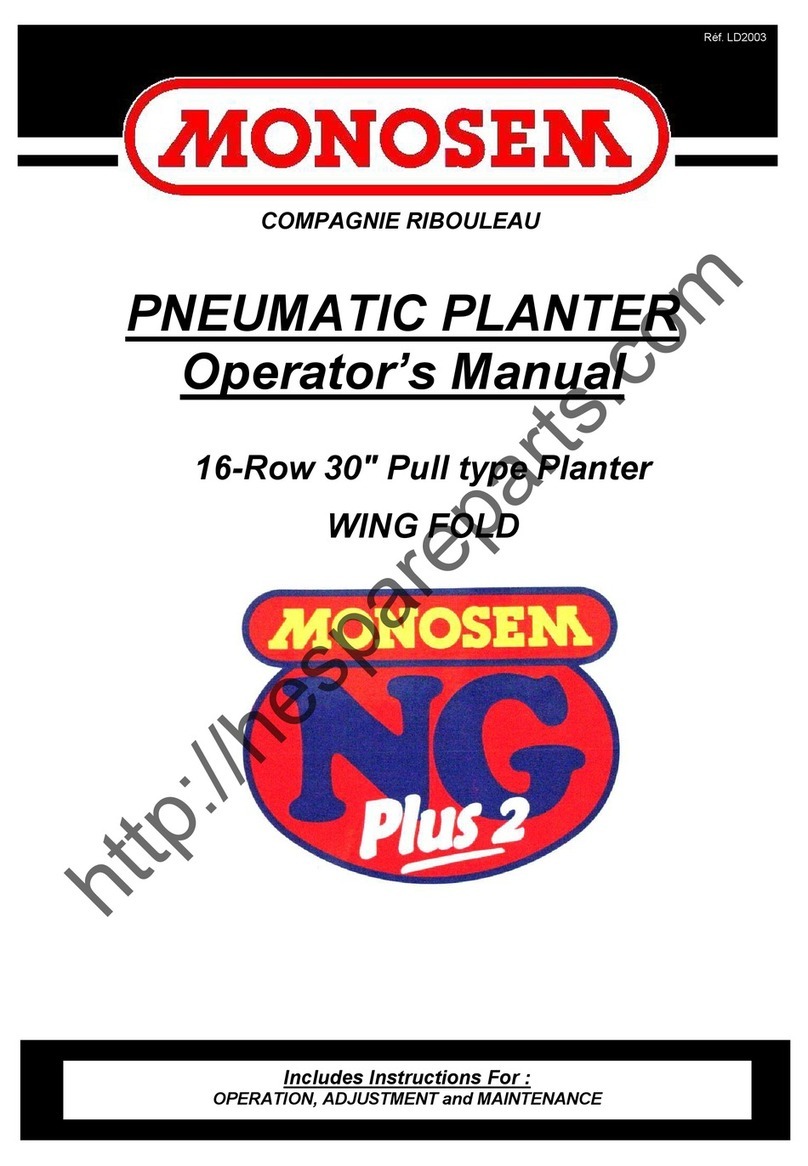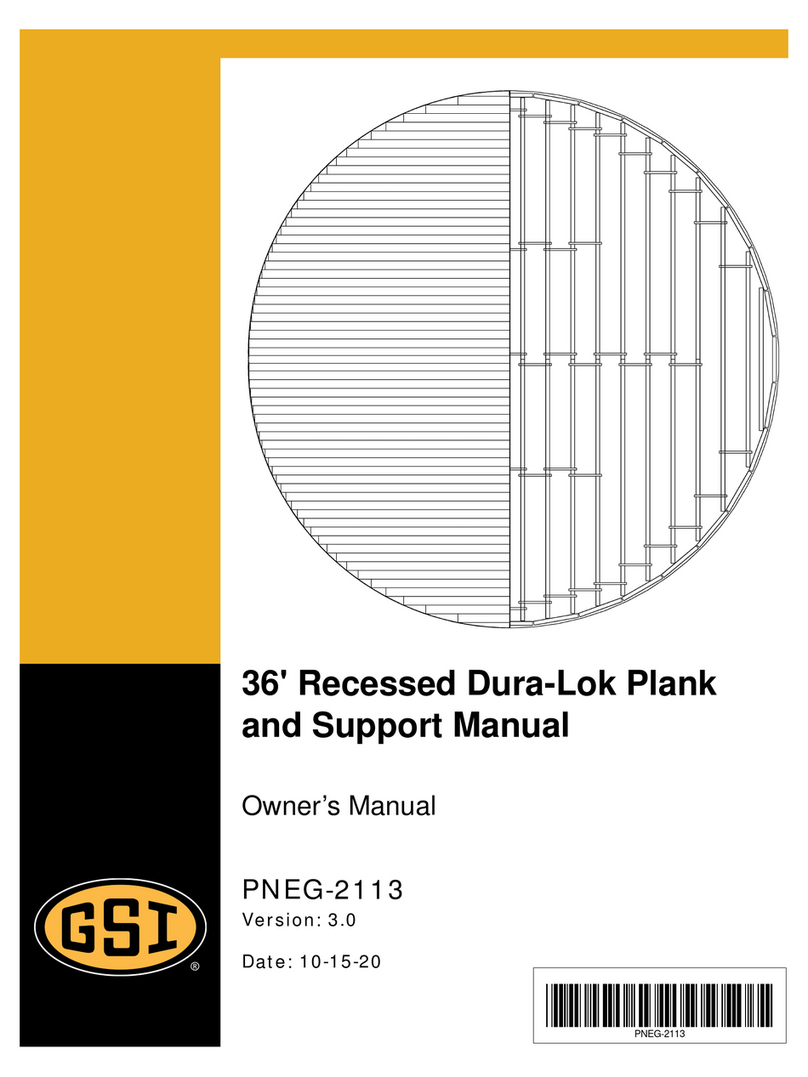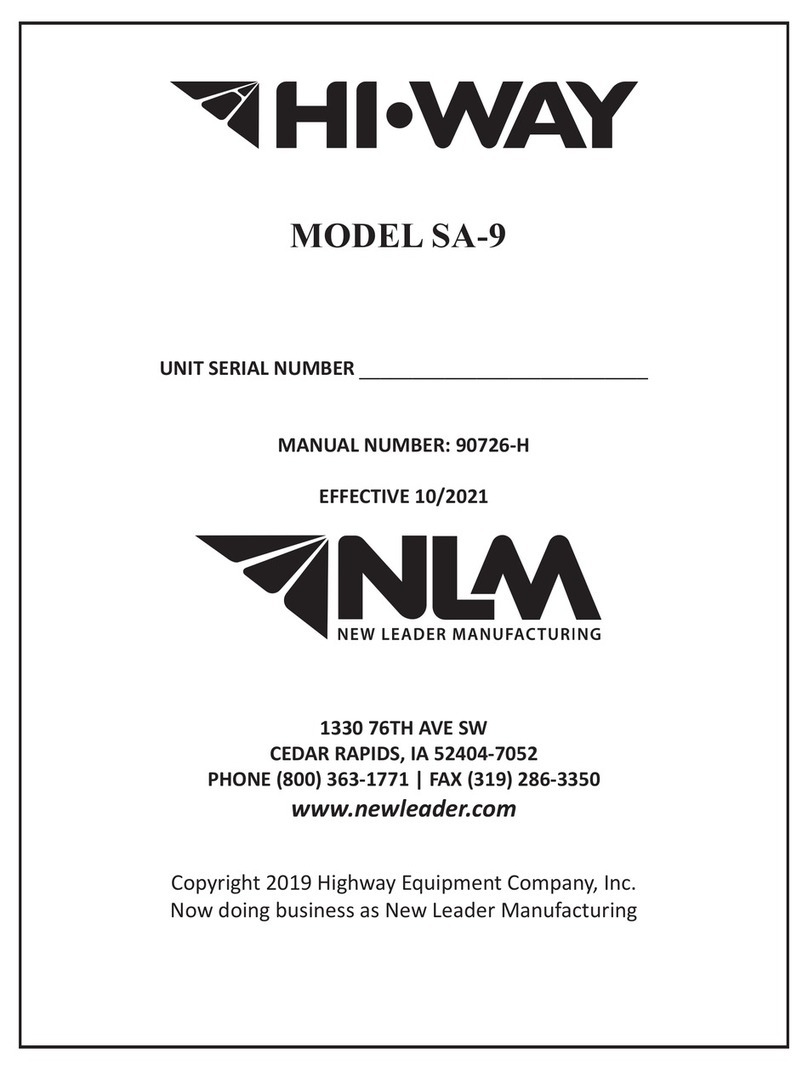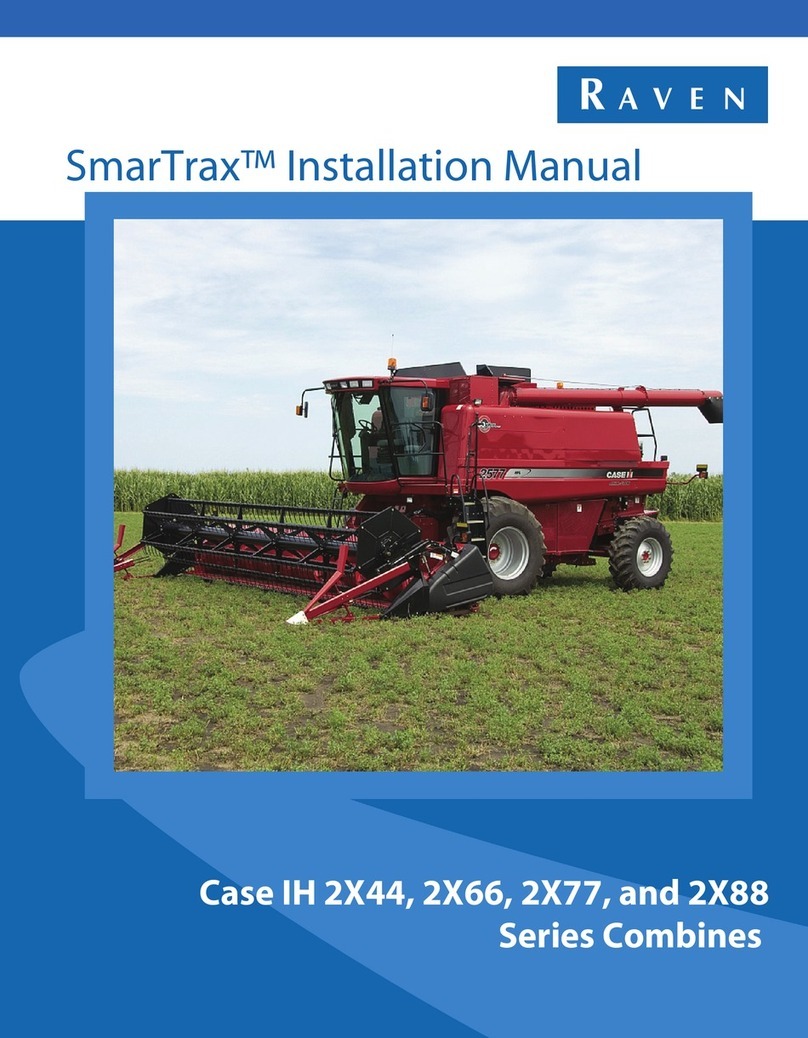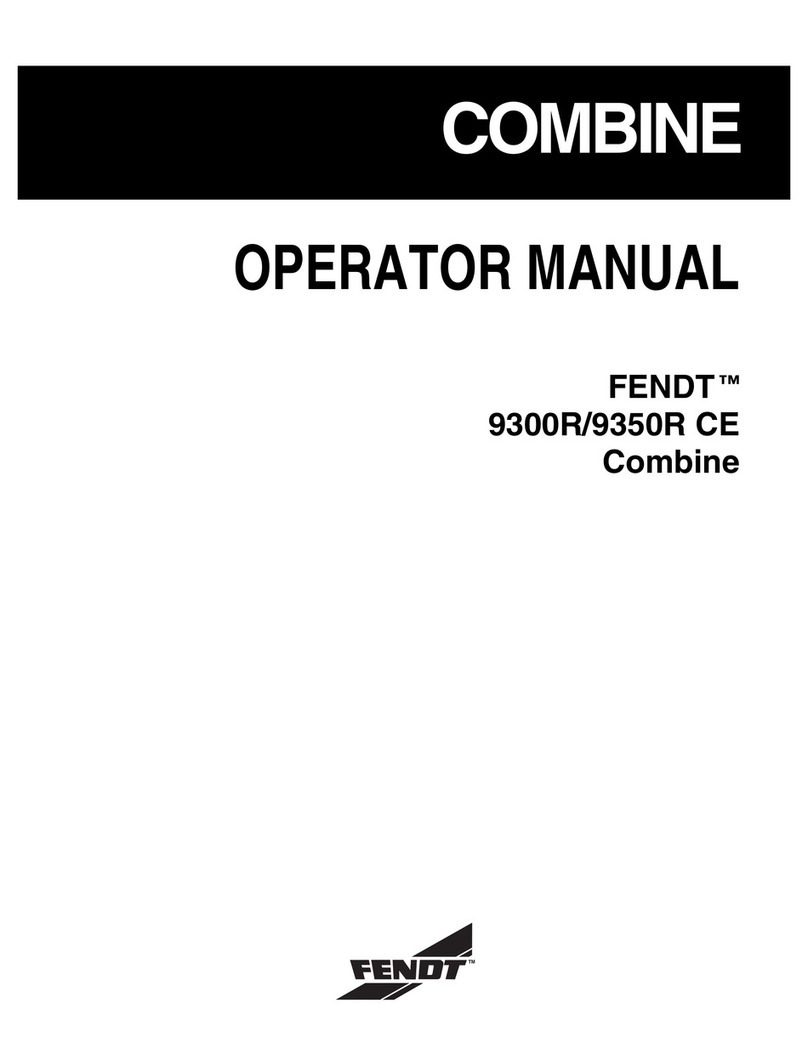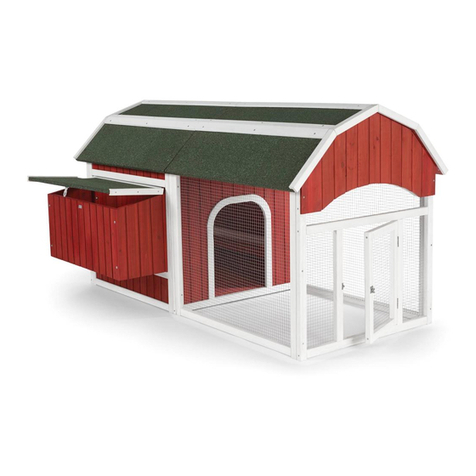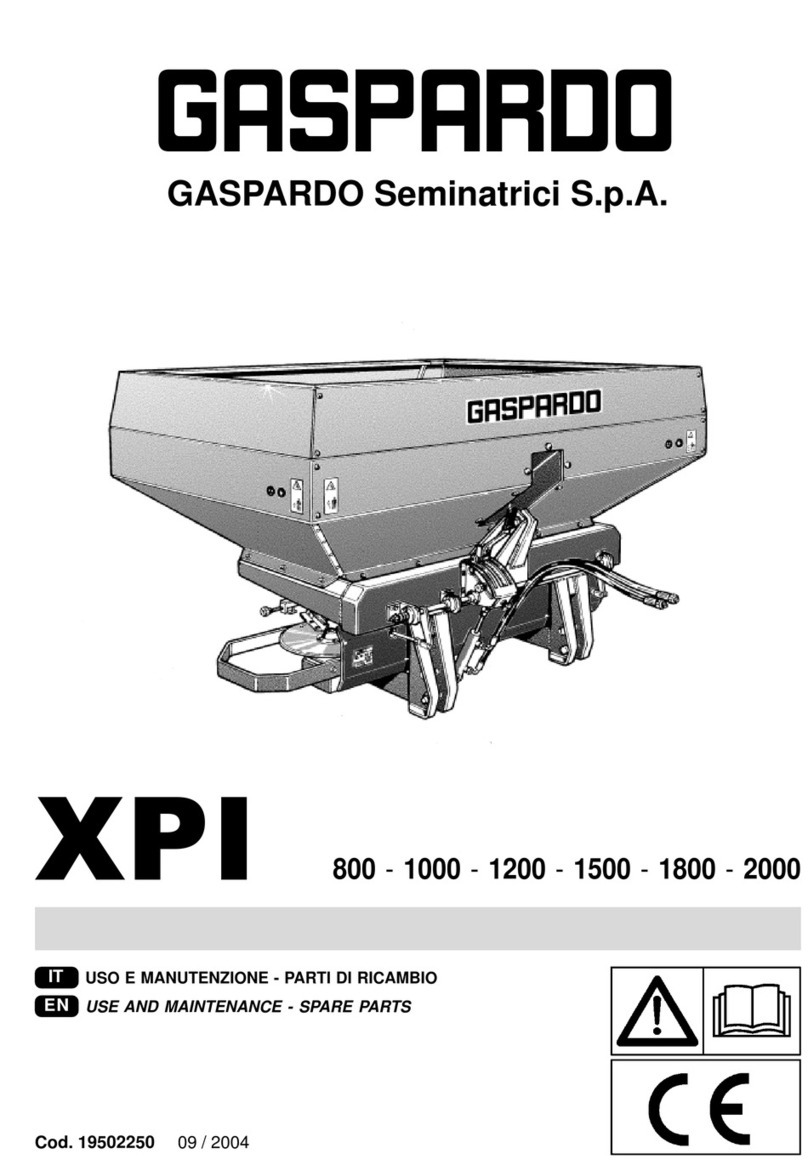Global RP-T2/S User manual

Rotary Hoe
1
ROTARY HOE
RP-T2/S
Instructions for use

Rotary Hoe
2
Contents
1 Introduction ................................................................................................................................................................................................2
1.1 Note well .........................................................................................................................................................................................2
2 Operational Safety......................................................................................................................................................................................3
2.1 Safety Regulations ...........................................................................................................................................................................3
2.2 Noise and Vibrations Levels ............................................................................................................................................................4
2.3 Safety Pictograms ............................................................................................................................................................................4
3 Basic Information ......................................................................................................................................................................................4
3.1 Use of the Machine ..........................................................................................................................................................................4
3.1.1 Technical Data .......................................................................................................................................................................4
3.2 Description of the Machine and its Parts .........................................................................................................................................4
4 Operating Instructions ................................................................................................................................................................................5
4.1 Machine Assembly...........................................................................................................................................................................5
4.1.1 Machine Assembly Procedure ...............................................................................................................................................5
4.2 Commissioning ................................................................................................................................................................................6
4.2.1 Engine Starting ......................................................................................................................................................................6
4.2.2 Working with the Machine ....................................................................................................................................................6
4.2.3 Machine Stopping ..................................................................................................................................................................6
5 Maintenance, Care, Storage .......................................................................................................................................................................6
5.1 Machine Lubrication ........................................................................................................................................................................7
5.2 Sharpening and Replacement of Working Knives ..........................................................................................................................7
5.3 Servicing intervals ...........................................................................................................................................................................7
5.4 Storage .............................................................................................................................................................................................7
5.4.1 Machine Washing and Cleaning ...........................................................................................................................................7
5.5 Disposal of Packaging and the Machine at the End of its Service Life ..........................................................................................7
5.6 How to Order Spare Parts ................................................................................................................................................................8
6 Address of the Supplier .............................................................................................................................................................................8
7 Attached illustrations ...............................................................................................................................................................................9
The supplier reserves the right to implement technical changes and innovations not affecting the operability
and safety of the device. These changes may not show in these Operating Instructions.
Typographical errors reserved.
1 Introduction
Dear Customer/User!
Thank you for your confidence in purchasing our product. You have become an owner of a device from the wide range of machinery and
tools of the gardening, farming, small agricultural and municipal technology system supplied by KNIGHTS a.s.
Rotary hoe RP-T2/S makes laborious and time-consuming weeding and soil loosening easier. Its main task is fine surface loosening and
removal of small weeds between rows of grown plants. It is easier for nutrients, water and sunbeams to get to the plants and your crop will
perfectly prosper. The rotary hoe is delivered as a complete set, form which you may assemble four working widths - 12, 18, 28, and 34 cm.
These widths enable to use the machine for many plants from small root vegetables to grapevine.
Please read these Operating Instructions carefully. If you follow the instructions contained herein, our product will serve you reliably for
many years.
1.1 Note well
The user must read through these operating instructions and follow all device operating instructions in order to prevent any health risks
or property damage to the user or other persons.
Safety instructions stated in this manual do not cover all possible conditions and situations which may occur in practice. Safety factors
such as a reasonable approach, care and caution are not included in this manual but it is assumed that each person using the device or doing
any maintenance work on it is sufficiently endowed with these.
Only mentally and physically fit persons may use this device. Should this device be used commercially, the owner of the device is bound
to provide the operators with work safety training and instruct them in operation of the device and keep records of such training . The owner
must also implement so-called categorization of works per corresponding national legislation.
If any piece of information contained in the manual is unclear to you, please contact directly your dealer or supplier.
Operating instructions provided with this device form an integral part of it. They must be available at all times, stored at an accessible
place where they cannot get destroyed. In the case the device is sold to another person, the operating instructions must be handed over to the
new owner. The supplier bears no responsibility for the risks, hazards, accidents or injuries resulting from operation of the device, if the
above-mentioned conditions have not been met.
The supplier bears no responsibility for the damage caused by unauthorized use, inappropriate operation and for any damage caused by
any modification of the device without the supplier’s approval.

Rotary Hoe
3
During work it is necessary to follow safety regulations to avoid any injury to yourself or other persons present nearby and to avoid any
property damage. These instructions are marked in the manual by the following warning symbol:
If you see this symbol in the manual, carefully read the statement following after it!
This international safety symbol indicates important instructions concerning safety. If you see this symbol, be aware that there is a
risk of injury to you or other persons, and carefully read the statement following after it, please.
Table 1 : Symbols
2 Operational Safety
The machine is designed to protect the operator as much as possible against any flying pieces of soil. Do not remove any passive or
active security features. You would expose yourself to the risk of injury.
2.1 Safety Regulations
The machine operator must be over 18 years of age. He is obliged to familiarize himself with the instructions for the use of
the machine and to be familiar with the general principles of occupational safety.
Do not start the engine if the drive unit is not connected to any working tool! Do not remove the drive unit from the working
tool when the engine is running!
Start the engine with the starting stand. The working part of the machine (the knife blades) must be lifted above the ground so
that the machine can not accidentally move or throw any objects.
Always make sure that no part of the machine (especially the working device or its cover) is damaged or loose before
using the machine. Identified defects must be immediately eliminated. Use only original spare parts during repairs.
Check the correct operation of the safety switch on the left hand grip of the drive unit before starting your work!
RP-T2/S rotary hoe may only be transported to the workplace where it is used only on the transport kit. Never transport the
machine on its own wheels and on public roads.
Due to exceeding the recommended noise and vibration values, follow these instructions when working with the machine:
Protect your hearing using suitable protection aids according to ČSN EN 352-1 (earmuffs) or ČSN EN 352-2 (earplugs).
Ask for these aids from you dealer.
After 20 minutes of work with the device make a break for at least 10 minutes. During these breaks the respective operators
must not be exposed to any other source of noise or vibrations.
During your work, use work aids approved according to ČSN EN 166 or ČSN EN 1731 (close-fitting clothes, sturdy shoes,
work gloves, and safety glasses). Keep a safe distance from the device secured by the position of the handle.
Do not start the engine indoors! Proceed with caution when handling the device. When the engine is turned off, the exhaust
silencer remains hot. When filling the fuel make sure that no leak occurs and you do not spill the fuel over the engine parts. If it be
to the contrary, dry the affected parts or wait until the petrol evaporates.
When working with the machine, all other people (especially children) and animals must stay outside the machine's work
area. The operator may only continue working after they reach a safe distance.
It is forbidden to remove any protective devices and covers from the machines.
The safe climbing ability of the machine is 7°. The maximum long-term tilt of the engine is 20° and short-term one is 30°.
Any repairs, adjustments, lubrication and cleaning of the machine must be carried out when the machine is at a standstill and
its spark plug connector is disconnected.

Rotary Hoe
4
2.2 Noise and Vibrations Levels
PJGCV160
PJGCV190
Declaredemission sound level Aat the operator's site
L
pA
= 86 dB +4dB
L
pA
= 80 dB +4 dB
Sound power level A
L
Wa
= 99 dB +4 dB
Declaredcumulative value of the acceleration of vibrations transmitted to the
operator’s hand-arm
a
hv
= 9.2 m.s
-2
+ 3.7m.s
-2
a
hv
= 15.0 m.s
-2
+ 6.0m.s
-2
Table 2 : Noise and Vibrations Levels
2.3 Safety Pictograms
The user is obliged to keep the pictograms on the machine in a legible condition, and if they are damaged, then to replace them.
Position:
Numb
er:
Description:
Combined label, which is attached to
the rear hinged cover. (Fig. 15 )
(1)
Before using the machine, read through the operating instructions.
(2)
When doing maintenance on the machine, disconnect the spark plug connector.
(3)
It is forbidden to place your hands or feet into the machine's operating area – risk of getting cut.
(4)
Risk of being hit by flying pieces, cuttings, thrown objects, etc. Observe the safe distance from the machine given by
the handlebars.
(5)
It is forbidden to step into the running machine's working area - risk of injury.
(6)
When starting the engine, the working part of the machine (snapping knives) must be lifted above the ground so that
the machine can not move or any objects thrown accidentally - the starting stand must be used.
Table 3 : Safety Pictograms
3 Basic Information
3.1 Use of the Machine
The rotary hoe is designed for inter-row soil digging and small weeds disposal. It guarantees soft soil softening and its loosening
between the rows of sown crop cultures. It does not turn soil over, it only mixes it. Based on its type of knives used, it is particularly suitable
for lighter soils. The RP-T2/S rotary hoe’s power drive is PJGCV160 or PJGCV190.
It is forbidden to remove any protective devices and covers from the machines.
3.1.1 Technical Data
RP-T2/S
Unit
Value
Length
mm
890
Width over the covers (per mounted knives)
mm
166/222/324/380
Height
mm
300
Weight
kg
17/20
Gearbox weight
kg
7
Working width
cm
12/18/28/34
Working depth
cm
2-8
Max. speed(at engine 3,600 RPM)
min
-1
250
Machine's surface power
m
2
.h
-1
100-300
Gearbox oil volume
l (litre)
0,125
Gearbox OIL quality
API
GL-5
SAE
90
Table 4 : Technical information on RP-T2/S
3.2 Description of the Machine and its Parts
The rotary hoe RP-T2/S (Fig. 2 ) features a few groups:
Gearbox T-2/S (1) - the steering wheel is attached to the front of the gearbox using the pins; a carrier with a skive and hoeing device
cover are attached to the rear side, using the same pins. The hoeing device is mounted to the output shaft through the axial pin. The drive unit
is attached to the flange at the top of the box, and it is secured with quick-release clamps.
The hoeing device (2) with its working widths of 12, 18, 28, and 34 cm with angular knives is an autonomous working component of
the rotary hoe. It consists of 4 regular stars, 2 narrow stars 2 spacers and 2 axial pins. There is no distinction between the left and right stars.
The hoeing device is attached to the gearbox output shaft.
The covers (3) are the machine’s integral parts that must not be removed. They prevent treated soil from hitting the machine operator.
They consist of a cover holder, top cover for the working widths of 12 and 18 cm, top cover for the working widths of 28 and 34 cm, left and
right sides, hinged cover for the working widths of 12 and 18 cm, and hinged cover for the working widths of 28 and 34 cm. The covers are
mounted on the gearbox together with the skive carrier by means of two pins, which are secured with cotters.
The steering wheel (4) is used for moving the machine. It prevents the machine from being buried in very light soil while working.
Together with the skive, it sets the hoeing depth. It is mounted to the front side of the gearbox by means of two pins, which are secured with
cotters.

Rotary Hoe
5
The skive carrier with the skive (5) is mounted to the rear side of the gearbox together with the covers by means of two pins, which are
secured with cotters. The skive is used as a spur, which sets the hoeing depth and reduces the machine's forward speed.
4 Operating Instructions
4.1 Machine Assembly
Request unpacking of the machine and training from your dealer as a part of the pre-sale service!
The gearbox features a pre-assembled hoeing device with its working width of 28 cm (the width over the covers
is 32 cm).
The assembled cover in the package can not be used for any working width. The sides must be removed from
the cover, or one of them must be moved to its correct position for the working width of 12 or 18 cm.
The machine's right and left sides are determined when viewed from the operator's location.
While assembling the hoeing device, never use only one M12x1.5 nut (it may get loose and damage the machine).
Always use another “lock nut”!
4.1.1 Machine Assembly Procedure
Assemble the machine per the following procedure: (We recommend completing the assembly by two persons)
1) Per Fig. 1 - Remove the top cover (1) from the box, including the gearbox with its pre-assembled hoeing device (2), assembled
top cover (3), two stars (4), starting stand (5), steering wheel arm (6), skive carrier (7), skive (8), hinged covers (9 and 10), axial
pin (11), cover holder (12), steering wheel (13), and hardware bag (14).
2) Per Fig. 3 - Steering wheel assembly. Grease the steering wheel arm pin (1) with plastic grease (e.g. LV2-3), attach the steering
wheel (2), item 21 (3), and secure it with the screw ring 15 (4).
3) Per Fig. 4 - Skive carrier with a skive. Insert the skive (2) into the skive carrier tube (1) and secure it by a cotter (3) in its required
position.
4) Per Fig. 5 - Cover for the working widths of 12 and 18 cm. Attach the cover holder (2) to the top (narrow) cover (1) by means of
washers 5, 2 (5-4 units) and self-locking nuts M5 (6-4 units). Next, bolt the right (3) and left (4) sides - each with 4 washers 5,2
and self-locking nuts M5 - according to the desired working width. The figure shows a cover for the working width of 12 cm. In
the case of the working width of 18 cm, the sides get mounted to the edge line of openings – A. Tighten the nuts. Attach the
hinged cover (7) to the locks on the rear side of the top cover - for easier assembly of the housing on the gearbox, the hinged
cover may only be fitted after mounting the cover and the skive carrier to the gearbox.
5) Per Fig. 6 - Cover for the working widths of 28 and 34 cm. Assemble it in the same way as in item 4). Use the wide top (1) and
hinged (7) covers. The figure shows a cover for the working width of 28 cm. In the case of the working width of 34 cm, the sides
get mounted to the edge line of openings – A.
6) Per Fig. 7 - Hoeing device 12 cm. Attach the narrow stars (1) to the hexagon sockets of the gearbox - the star blades have to be
facing each other, pull the short axial pin through from the right (2), attach the washer (3), and screw the M12x1.5 nuts (4-2
units). The hexagons on the head of the axial pin and on the washer must fit into the star hex holes. Tighten the nuts properly.
7) Per Fig. 8 - Hoeing device 18 cm. Assemble it in the same way as in item 6). Use the regular stars (1).
8) Per Fig. 9 - Hoeing device 28 cm. It is pre-assembled on the gearbox from the factory. Make sure that the hexagons of the spacers
(2), axial bolts (4) and washers (5) are securely fastened to the holes in the stars (1 and 3). Tighten the M12x1,5 nuts (6).
Complete the assembly per item 9). Use the narrow stars (3) as outer ones.
9) Per Fig. 10 - Hoeing device 34 cm. Attach the regular stars (1) to the gearbox hexagon sockets (1) - the star blades must be
located against each other. Insert the shorter hexagon of the spacers (2) into the stars, place the regular stars (3) onto the spacers
so that the blades are rotated 45° against the inner star blades. Pull the long axial pin (4) from the right, attach the washer (5), and
screw the M12x1.5 nuts (6-2 units). The hexagons on the head of the axial pin and on the washer must fit into the star hex holes.
Tighten the nuts properly. The shorter spacer hexagon must fit into the inner star!
10) Per Fig. 2 - Attach the corresponding cover (3) to the rear side of the gearbox (1) with its attached hoeing device (2) to the
required width - sliding from behind the "collar" on the gearbox (Fig. 17 ). Insert the skive carrier with a skive (5) through the
cover holder and secure both of them with locking pins (6) and split cotters (7) to the gearbox. Attach the steering wheel (4) to the
front side of the gearbox and secure it with two pins with their split cotters.
11) Attach the PJGCV160 or PJGCV190 drive unit to the assembled rotary hoe and secure it with its quick-release clamps – the pin
on the gearbox must fit into the flange hole (Fig.11 ). You may slightly move the drive unit to support its attachment.

Rotary Hoe
6
4.2 Commissioning
Always use the starting stand during starting!
First of all, thoroughly read the engine operating instructions! This way, you will avoid its potential damage.
Before every use of the rotary hoe, check its safety switch on the left handle of the handlebars.
4.2.1 Engine Starting
Make sure that all persons, animals, children are at a safe distance from the machine! Otherwise, do not continue with
the start-up process!
When starting the engine, follow the operating instructions for the drive unit and the engine.
1. Pull out the upper pin attaching the steering wheel to the gearbox and move it to the "start and transport" position (top Fig. 12).
Secure the steering wheel with the pin and split cotter. Lock the skive in the top hole (Fig. 14). Put the machine with its skive into
the starting stand (Fig. 13).
2. Set the safety switch and accelerator lever, step with your left foot onto the starting stand - pay extra attention, making sure
your feet do not reach under the hoeing device cover, hold the machine with your left hand on the handlebar, and start the
enginewith your right hand.
When starting the engine, be careful since the machine does not feature any neutral gear. When starting with the
accelerator lever set to a speed higher than its idle speed (and because of the use of a centrifugal clutch), the hoeing device
may start spinning right after the start. This may cause objects to be thrown, or this may happen when no starting stand is
used to start the machine!
4.2.2 Working with the Machine
Set the steering wheel to its working position (bottom Fig. 12) and skive per the desired working depth. Set the accelerator lever to the
maximum speed. The machine will immediately move forward. By pressing or raising the handlebars, you may control the machine's speed
and working depth. If the working depth is too big, the machine may stop moving forward. Just lift the handlebars, so the skive gets relieved,
and the machine will start moving forward again.
The recommended working depth is 2 - 8 cm, without damaging any plant root system.
At the end of the rows, move the accelerator lever to the idle speed. The machine will stop. Lift the handlebars to pull the hoeing device
from the soil and turn it towards the next row. Set the maximum engine speed again, and the machine will start moving.
Do not turn with the engine speed set to the maximum. In case of an accidental contact of the spinning hoeing
device with the ground, soil or other objects may be thrown - risk of the operator’s or other persons’ injury.
The supplier does not recommend using machines with their working widths of 12 and 18 cm on any slope due
to their high centres of gravity and small widths; the 28 and 34 cm working width machines are to be only used with
extra caution!
4.2.3 Machine Stopping
If you wish to stop the machine’s move, turn the accelerator lever to its “MIN” or “STOP” position. In the emergency, release the left
handle of the handlebars. The safety switch will turn off the engine, and the machine will stop immediately.
5 Maintenance, Care, Storage
To secure a long-term satisfaction with our product, it is necessary to provide it with due care and maintenance. By providing regular
maintenance of the machine, you will prevent its rapid wear and secure correct operation of all its parts.
Observe all instructions concerning maintenance and adjusting intervals. We recommend that you keep records of operating hours and
the conditions under which the machine is used (these may be useful for servicing centres). We recommend that you have the post-season
maintenance implemented by one of our authorized service centres; the same applies to standard maintenance if you are not certain of your
technical capabilities.
Before every use of your machine, check the tightness of the nuts, which attach the hoeing device to the gearbox.

Rotary Hoe
7
5.1 Machine Lubrication
When working with lubricants, observe the basic hygiene regulations and observe the environmental protection
regulations and laws.
If you are not sufficiently manually skilled, have the operations done by an authorized service centre.
1. The gearbox worm gears operate in their oil bath. In the case of new machines, replace oil after the first 10 hours of operation and then
after 100 hours or after the season. Check the oil condition once a month or before the machine’s use. Recommended oil MOGUL
TRANS 90H – 125 ml. Change warm oil - its draining from the gearbox will be easier. The draining and filling hole is at the bottom of
the gearbox (Fig. 16)
2. Always after the season, remove the steering wheel (the wheel is secured with a screw ring and flat washer), clean and grease the pin
with grease, e.g. LV2-3, and replace the wheel.
5.2 Sharpening and Replacement of Working Knives
The knives are permanently attached to the star flange. They do not get sharpened, and we do not distinguish between left and the right
knives. If only one side features worn working knives, you may swap the stars from the left side to the right one, and vice versa.
Note: In the case of any unprofessional repair of any knives or stars, using non-original parts, the supplier is not liable for any machine
damages or damages caused by your machine.
If any knife cracks, immediately replace its corresponding star!
5.3 Servicing intervals
Activity
Before hoeing
During the season
Before storage
Gearbox oil change
-
After the first 10 hours, then after 100 hours
Yes
Gearbox oil check
Yes
One a month
Yes
Washing
-
2x
Yes
Removal of accumulated soil and plant residues
-
After every use
Yes
Blade sharpening
-
-
-
Star blades check
Yes
Immediate replacement upon damage
Yes
Hoeing device tightening check
Yes
-
Yes
Checking tightening of screwed connections
Yes
every 5 hours
Yes
Lubrication
checking the condition
checking the condition
Yes
Table 5 : Servicing intervals
5.4 Storage
Prior to any long-term storage (e.g. at the season end) remove all the dirt and plant residues from the machine. Prevent unauthorized
persons from access to the machine. Protect your machine against climatic conditions, but do not use any impermeable protection to prevent
excessive corrosion of the machine.
Make sure the star working knives are not damaged. If so, replace them, please.
We strongly recommend the following steps:
Preserve the hoeing device stars.
Remove all the dirt and plant residues from the machine.
Repair any paint damage.
Lubricate the machine after the season.
5.4.1 Machine Washing and Cleaning
When washing and cleaning the machine, proceed so as to observe valid provisions and laws regarding protection of
water courses and other water resources against pollution or contamination by chemical agents.
Never wash the engine by a water jet! The engine electrical equipment might be damage after you start the
engine.
Do not clean your engine with any pressure washer.
5.5 Disposal of Packaging and the Machine at the End of its Service Life
After unpacking the device, the user is obliged to dispose of the packaging material according to national laws and waste disposal
regulations.

Rotary Hoe
8
When disposing of the device at the end of its service life we recommend you proceed as follows:
Demount from the device all parts that may still be used.
Drain oil from the gearbox into a suitable closable container and dispose of it in a waste collection centre.
Demount plastic parts and non-ferrous metal parts.
Dispose of the remaining machine and disassembled parts according to the national laws and regulations on waste
disposal.
5.6 How to Order Spare Parts
These Operating Instruction do not include the list of spare parts. The last version of the catalogue can be downloaded from our website.
If you do not have Internet access, you can ask for the printed catalogue to be sent C.O.D. For correct identification of your machine, you
have to know the type designation (Type), order number (CN°) and serial identification number (N°) stated on the machine’s ID plate,
on the box, or in the warranty card. Only with this information it is possible to search correctly for the designation of the respective spare
part.
Field
Description
Type
Machine type designation. (RP-T2/S)
N°
Unique serial identification number.
1005000001.0111.00001(product.period.number)
CN°
Business (order) number. (4347)
Table 6: Nameplate - example
6 Address of the Supplier
KNIGHTS a.s.
Phone:
(+420) 257 212 875
Ke Kapličce 387
Fax:
(+420) 241 400 549
252 41 Dolní Břežany
E-mail:
Czech Republic
Web:
http://www.global-tractor.com

Rotary Hoe
9
7 Attached illustrations
Fig. 1 : Machine unpacking
1) Top cover (for working
widths of 28 and 34 cm)
2) Gearbox housing with
mounted the hoeing device -
28 cm width
3) Assembled top cover (for
working widths of 12 and 18
cm) with its left and right
sides – it cannot be used if
assembled in this way
4) Regular star – 2 units
5) Starting stand
6) Steering wheel arm
7) Skive carrier
8) Skive
9) Hinged cover (for
working widths of 12 and 18
cm)
10) Hinged cover (for
working widths of 28 and 34
cm)
11) Axial pin
12) Cover holder
13) Steering wheel
14) Hardware bag
15) Pin
16) Cotter
17) Cotter
18) Washer 21
19) Screw ring
20) Nut M5
21) Washer 5.2

Rotary Hoe
10
Fig. 2 : Description of the Main Parts
1) Gearbox T-2/S
2) Hoeing device
3) Covers
4) Steering wheel
5) Skive carrier with a skive
6) Pin
7) Cotter
Fig. 3: Steering Wheel Assembly
1) Steering wheel arm
2) Steering wheel
3) Washer 21
4) Screw ring
Fig. 4 : Skive Carrier with a Skive
1) Skive carrier
2) Skive
3) Cotter

Rotary Hoe
11
Fig. 5 : Cover for the working widths of 12 and
18 cm.
1) Top cover for the
working widths of 12 and
18 cm
2) Cover holder
3) Right side
4) Left side
5) Washer 5.2
6) Self-locking nut M5
7) Hinged cover for the
working widths of 12 and
18 cm
The figure shows a cover
for the working width of
12 cm. In the case of the
working width of 18 cm,
the sides get mounted to
the edge line of openings
– A.
Fig. 6 : Cover for the working widths
of 28 and 34 cm.
1) Top cover for the
working widths of
28 and 34 cm
2) Cover holder
3) Right side
4) Left side
5) Washer 5.2
6) Self-locking nut
M5
7) Hinged cover for
the working widths
of 28 and 34 cm
The figure shows a
cover for the
working width of 28
cm. In the case of
the working width
of 34 cm, the sides
get mounted to the
edge line of
openings – A.
Fig. 7 : Hoeing device 12 cm
1) Narrow star
2) Axial pin – short
3) Washer
4) Nut M12x1,5
There is no distinction
between the right and left
star
Fig. 8 : Hoeing device 18 cm
1) Regular star
2) Axial pin – short
3) Washer
4) Nut M12x1,5
There is no
distinction between
the right and left
star

Rotary Hoe
12
Fig. 9 : Hoeing device 28 cm
1) Regular star
2) Spacer
3) Narrow star
4) Axial pin – long
5) Washer
6) Nut M12x1,5
There is no distinction
between the right and left
star
Fig. 10 : Hoeing device 34 cm
1) Regular star
2) Spacer
3) Regular star
4) Axial pin – long
5) Washer
6) Nut M12x1,5
There is no
distinction between
the right and left
star
Fig. 11 : Drive Unit Connection
Fig.12 : Steering Wheel Positions
Fig. 13 : Starting Machine’s Position
Fig. 14 : Skive Position

Rotary Hoe
13
No.: (1) (2) (3) (4) (5) (6)
Fig. 15 : Safety labels – combined sticker
Position on the machine
Fig. 16 : Oil draining and filling hole
Fig.17 : Sliding the cover onto the gearbox housing
Table of contents
Other Global Farm Equipment manuals
